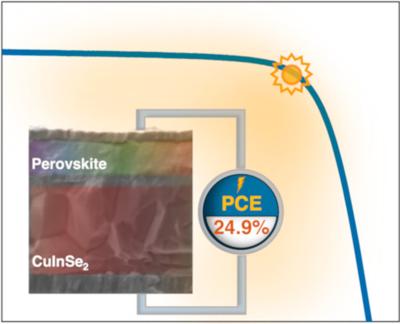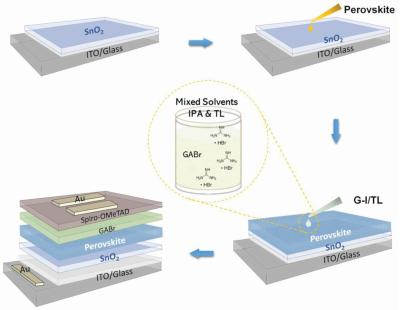Perovskite-Info weekly newsletter
Published: Tue, 06/21/22
The Perovskite-Info newsletter (June 21, 2022)
Cannot read this? View it online here
Researchers expose perovskites to real-world conditions to gain insights into degradation mechanisms
Researchers at Florida State University (FSU), in collaboration with ones from Argonne National Laboratory, have examined what happens when a halide perovskite faces real-world conditions, as opposed to pristine conditions of a chemistry lab.
They found that stressing halide perovskites with light and electric fields can create changes in the basic properties of the material and distort the lattice structure that is crucial to keeping this material stable.
Researchers use additives to boost stability and efficiency of perovskite solar cells
Scientists at the U.S. Department of Energy’s National Renewable Energy Laboratory (NREL), CU-Boulder and the University of Toledo have demonstrated a tin-lead perovskite cell that overcomes problems with stability and improves efficiency. The new cell, a tandem design with two layers of perovskites, reached 25.5% efficiency.
The new cell also retained 80% of its maximum efficiency after 1,500 hours of continuous operation, or more than 62 days.
Researchers develop perovskite/CIS tandem solar cells with efficiency near 25%
Researchers taking part in the EU project PERCISTAND, among them ones from the Karlsruhe Institute of Technology (KIT) and TNO, have developed perovskite/CIS tandem solar cells with an efficiency of almost 25% – the highest for this technology to date.

In addition, this combination of materials reportedly ensures lightness and versatility, so that the use of these tandem solar cells on vehicles, portable devices and foldable or rollable devices is also conceivable.
Researchers develop novel accelerated aging testing method and a perovskite solar cell with a commercially viable lifetime
Researchers from Princeton University in the U.S and Sweden's Linköping University have reported the development of "the first perovskite solar cell with a commercially viable lifetime". The team estimates their device can perform above industry standards for around 30 years, far more than the 20 years used as a threshold for viability for solar cells.
Not only is the device said to be highly durable, but it also meets common efficiency standards. It is the first of its kind to rival the performance of silicon-based cells, which have been market leaders for decades.
Halide perovskites enable scientists to get closer to quantum materials breakthrough
Researchers from the University of Nebraska-Lincoln and the University of California, Berkeley, have used perovskite materials to develop a new photonic device that could get scientists closer to the “holy grail” of finding the global minimum of mathematical formulations at room temperature. Finding that illusive mathematical value would be a major advancement in opening new options for simulations involving quantum materials.
Many scientific questions depend heavily on being able to find that mathematical value, said Wei Bao, Nebraska assistant professor of electrical and computer engineering. The search can be challenging even for modern computers, especially when the dimensions of the parameters — commonly used in quantum physics — are extremely large. Until now, researchers could only do this with polariton optimization devices at extremely low temperatures, close to about minus 270 degrees Celsius. Bao said the Nebraska-UC Berkeley team “has found a way to combine the advantages of light and matter at room temperature suitable for this great optimization challenge.”
Researchers design four-terminal tandem perovskite/CIGS solar cell with 25.5% efficiency
Researchers from Wuhan University and Shenzhen University in China have designed a four-junction tandem (4T) solar cell based on perovskite and copper, indium, gallium and selenium (CIGS), through a novel surface passivation technique that uses guanidine bromide (GABr).

The team tested GABr in mixed solvents combining isopropyl alcohol (IPA) and toluene (TL), which they said can efficiently passivate interface and grain boundary defects by minimizing the IPA solubility of the perovskite surface. They compared the mixing of IPA with ethyl acetate (EA), chlorobenzene (CB), and toluene (TL) to dissolve GABr, and further optimized the concentration of GABr and the mixing ratio of the two solvents.
SC SOLAR launches new equipment line for perovskite solar cells
China-based equipment maker, SC SOLAR, has launched new cluster-type evaporation equipment specially suited for perovskite solar cells.
SC SOLAR has been working towards establishing an intelligent equipment manufacturing center, located in Suzhou. It is meant for assembling high-end photovoltaic module production lines and also for establishing an R&D center for heterojunction and perovskite tandem cells development.


